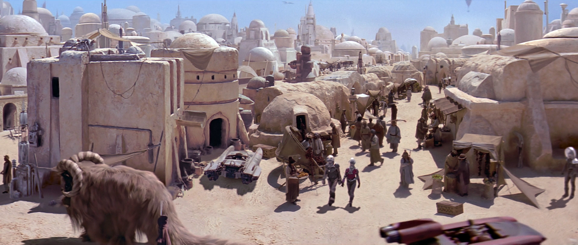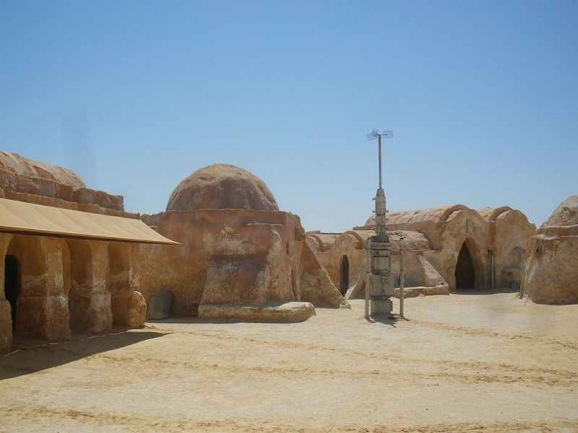Star Was Filming Locations Threatened By A Fast Moving Sand Dune
This article is more than 2 years old
 While we know they change shape often, we don’t usually think of sand dunes as particularly fast-moving objects. If we consider their movement at all, it’s usually in a glacial sense, creeping across the desert floor like giant, gritty sloth. Or maybe that’s just me, after all, I live in a place where even the vast majority of our beaches don’t have sand. That said, a rather fleet-footed dune is threatening a cherished piece of science fiction history, the childhood home of Anakin Skywalker of Mos Espa on Tatooine.
While we know they change shape often, we don’t usually think of sand dunes as particularly fast-moving objects. If we consider their movement at all, it’s usually in a glacial sense, creeping across the desert floor like giant, gritty sloth. Or maybe that’s just me, after all, I live in a place where even the vast majority of our beaches don’t have sand. That said, a rather fleet-footed dune is threatening a cherished piece of science fiction history, the childhood home of Anakin Skywalker of Mos Espa on Tatooine.
Jani Radebaugh, a planetary scientist at Brigham Young University, says that an encroaching pile of sand will soon cover the locations in the Tunisian desert. Eventually all of the buildings will be buried and hidden. In 2009, the dune measured 20 feet tall and 300 wide, and it is estimated that it has been moving toward the landmark at a rate of 50 feet per year. That’s like Usain Bolt speed for a sand dune. Radebaugh says, “In terms of geologic time scales, it’s one of the fastest things we see happen, aside from lava flows and landslides.”
After the release Star Wars: Episode I: The Phantom Menace in 1999, tourists began pouring over the site. Officials estimate that they receive 100,000 visitors on an annual basis. This isn’t the first time that shooting locations from George Lucas’ space opera have been reclaimed by nature. The sets from the original trilogy also once attracted hordes of vacationing fans, but many of them have also been lost to the desert.
According to Radebaugh, bulldozing the dune out of the way is not an option. Apparently there’s another, even larger, dune following close on the heels of the first. No word if that one is as quick as its counterpart, but moving the dirt would only be a Band-Aid, like trying to stop really, really slow moving waves. In reality, the most practical course of action would be to move the whole shebang, and shift the remaining structures 650 feet to the south.
While this move could save the day, it would only be a partial victory. It’s likely too late for some structures. At least one dwelling, as well as two other buildings, are already partially buried under the encroaching sand. Radebaugh jokes, “The sand people in Star Wars are nomads, right? Maybe they are nomads because the sand moves.”
Though potentially sad, not to mention crippling to portions of the Tunisian tourist industry, Radebaugh sees a silver lining in all of this. She says that, via Star Wars, there is an increased interest in the study of our own planet. She has studied the moons of Saturn and Jupiter with NASA, but says, “It’s fun to see geology in action…We live on a dynamic planet.”













